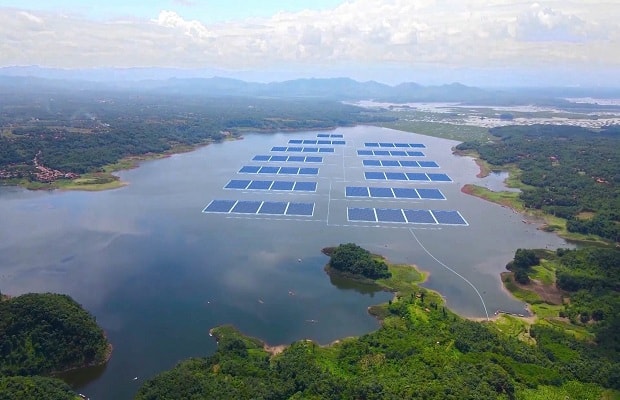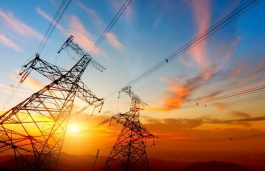Highlights :
- Floating solar farms employ solar panels that are attached to plastic floats, which then drift on a body of water.
-
These floating solar arrays are typically placed on man-made bodies of water—a town’s water reservoir, an irrigation reservoir, a water treatment facility.

Towards last year’s end, South Korean solar developer Scotra completed the construction of a 41 MW floating solar installation on a reservoir on the Hapcheon Dam. The land-scarce country has set a target of installing 2.1 GW of floating solar by 2030 and of becoming carbon-natural by 2050.
Floating solar farms employ solar panels that are attached to plastic floats, which then drift on a body of water. These floating solar arrays are typically placed on man-made bodies of water—a town’s water reservoir, an irrigation reservoir, a water treatment facility—so as to avoid interfering with plant and animal species that live in natural bodies of water.
The 41 MW floating plant is the largest such project in South Korea, which has so far shown lukewarm progress in renewable energy. It is also hoped that the flowers-like solar panel arrangements will fetch many a tourist to the East Asian country.
Scotra has also built a 25 MW floating solar plant at a reservoir in Jeollanam province in S. Korea, besides smaller arrays elsewhere. Currently, it’s biggest ongoing project is the 72 MW project at the Saemangeum dam on the Yellow Sea.
Despite being expensive to set up, these floating projects offer a number of benefits: easy connectivity to the power grid through hydro-electric plants and reservoirs near urban areas; impeding the growth of algae; the water’s cooling effect on panels makes them more efficient; additional avenue for revenue; reduction of evaporation.
Floating solar’s key incentive, though, is that the technology does not require any land space, which explains its popularity among other Asian countries where most of the land is under residential and agricultural use:
- Thailand built the world’s largest hydro-floating solar hybrid system on the Sirindhorn reservoir last year;
- Singapore has begun a 60-MW-peak plant on its Tengeh Reservoir;
- India plans to complete its huge 600 MW plant above the Omkareshwar dam by 2023;
- Last year, Indonesia began constructing the 145 MW Cirata power plant, which is likely to be the largest floating photovoltaic power project in Southeast Asia.
Additionally, in South Korea, land regulations, pricing, and local opposition have made building utility-scale projects difficult, say some analysts. Thus far, the most ambitious floating solar project in the country is a 2.1 GW floating solar complex being developed near the Saemangeum marshes on the Yellow Sea coast. While 1.2 GW is expected to be ready by the end of 2022, the remaining project capacity is expected to be added on by 2025.
The floating solar industry is expected to grow dramatically over the next decade, given that water-bound panels can also exist on the ocean. Where land is sparse and water abundant, the hope for renewables stays afloat through floating solar!





























